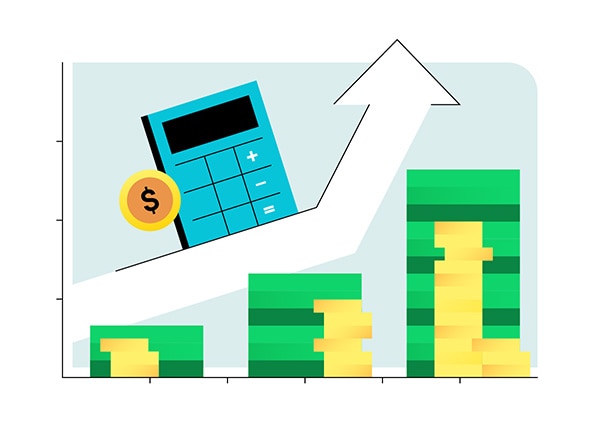The contribution margin represents a financial calculation that deals with a company’s ability to have a high enough amount of revenue to cover the variable cost of a product. Wondering how to calculate contribution margins for your small business? We have your answer just below.

What Is Contribution Margin?
Calculating Variable Costs
Some variable costs that go into a product include materials, labour, and utilities.
For example, you set the price of a product at $150. You pay $10 for the materials and $15 for the labour to manufacture each unit of this particular product, helping you arrive at the total price per unit. You also incur an additional $25 in variable costs to sell this product due to the fees you use for sales and the utilities needed to make the product in your facility. Your total variable costs come to $50.
Contribution Margin Formula
As mentioned above, the contribution margin is nothing but the sales revenue minus total variable costs. The contribution margin formula is practical and simple. Thus, the following structure of the contribution margin income statement will help you to understand the contribution margin formula.
- Contribution Margin = Sales Revenue – Variable Cost
- Contribution Margin = Fixed Cost + Net Income
Contribution margin is used to plan the overall cost and selling price for your products. It helps you in separating your fixed cost from variable cost. Further, it also helps in determining the profit generated through selling your products.
This means the higher the contribution, the more is the increase in profit or reduction of loss. In other words, your contribution margin increases with the sale of each of your products.
Furthermore, an increase in the contribution margin increases the amount of profit as well. This is because your fixed costs remain the same.
So, you should produce those goods that generate a high contribution margin. As a result, a high contribution margin would help you in covering the fixed costs of your business.
Contribution Margin Formula Components
The following are the components of the Contribution Margin:
Variable Costs
Variable Costs depend on the amount of production that your business generates. Accordingly, these costs increase with the increase in the level of your production and vice-versa.
Furthermore, the variable costs can be either direct or indirect. Direct Costs are the costs that can be directly identified or allocated to your products. For instance, direct material cost and direct labour cost are the costs that can be directly allocated to producing your goods.
The Indirect Costs are the costs that cannot be directly linked to the production. However, such costs are necessary for your business to operate. Indirect materials and indirect labour costs that cannot be directly allocated to your products are examples of indirect costs. Furthermore, per unit variable costs remain constant for a given level of production.
Sales Revenue
Sales revenue refers to the total income your business generates as a result of selling goods or services. It is often referred to as the top line of your business. Furthermore, sales revenue can be categorised into gross and net sales revenue.
The gross sales revenue refers to the total amount your business realises from the sale of goods or services. That is it does not include any deductions like sales returns and allowances.
On the other hand, net sales revenue refers to the total receipts from the sale of goods and services after deducting sales returns and allowances.
Operating Profit or Loss
Operating profit refers to the profit your business generates from its core business operations. It does not include profit earned from additional sources like investments
Calculating the Contribution Margin
To calculate the contribution margin for this particular product, we’ll use a contribution margin formula by starting with the price and then subtracting the variable costs. The contribution margin for this product is $150 minus the $50 in variable costs for a total of $100. Use the contribution margin for all of your products to compare which products do well and which ones you may need to tweak.
The contribution margin lets you calculate how much each individual product contributes to the profit of your business. Use this information to distinguish your best-selling products from ones that don’t do very well. Analysing your contribution margins for each product line you offer lets you adjust pricing strategies, plan for the future, and figure out how to price specific products throughout the year.
Disadvantages of Contribution Margin
The following are the disadvantages of the contribution margin analysis.
- It is based on the assumption that a given level of output can be sold at the same price
- The contribution margin also assumes that the average variable cost remains the same at each level of output
- It also presumes that profits are dependent on the level of output only. That is, it ignores factors like technological changes, improved management, etc
- The contribution margin overlooks the selling costs and only considers the production costs
- It considers accounting data and hence does not take into account certain estimates
- The contribution margin also neglects the concept of price elasticity of demand
QuickBooks Online allows you to track expenses and run customised reports to help you plan the best course of action for your business. 4.3 million customers use QuickBooks. Join them today to help your business thrive for free.













